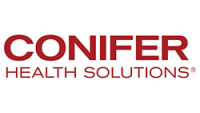5 opportunities to unlock revenue through better compliance management in the midcycle
Hospitals and health systems are facing unprecedented challenges. Inflation, rising costs and razor-thin margins have caused many to shutter service lines, lay off non-patient-facing employees or even close entire facilities.
These drastic measures might be avoidable if organizations could find opportunities to improve financial viability in other ways. Identifying and addressing noncompliance in the midcycle can help.
The middle part of the revenue cycle, which encompasses everything from patient registration to claims submission, is increasingly challenging to navigate due to the growing complexity of compliance and regulatory requirements. The following are five opportunities for improving midcycle compliance and enhancing revenue.
1 Pay attention to regulatory changes. Healthcare is a highly regulated industry with a focus on patient safety, financial integrity and quality outcomes. As part of this, CMS, as well as private and commercial payers, adjust their regulatory policies often. Keeping up with these changes can be highly challenging for revenue cycle teams.
One proven step revenue cycle leaders can take to enhance their team’s ability to stay on top of these adjustments is to assign each payer or set of payers to a specific team member. Organizations with multiple specialty services should find this approach especially helpful since specialty services billing is often complex and difficult to manage. In this way, each person develops a higher level of expertise for the payers they manage, which helps the organization improve payer compliance in the midcycle.
2 Elevate documentation quality. Noncompliant medical record documentation is a problem for many hospitals and health systems. One particular issue is copying and pasting information from previous encounters into a new encounter. While this may save time, it can cause “contradictions in a patient’s chief complaint documentation or history of present illness,” according to AHIMA. Another noncompliant documentation practice is “scribing,” where one person knowingly authenticates notes made by someone else. Scribing can lead to fraudulent billing and subsequent audits and penalties.
To improve documentation compliance, organizations should implement a clinical documentation improvement (CDI) program, which should include technology that can perform detailed charge analyses. The program should also include educating staff involved in documentation, including clinicians and physicians. They all need to understand why documentation compliance is essential and the risks practices like copying/pasting and scribing place on the organization’s bottom line.
3 Ensure coding compliance. Nowhere in the revenue cycle is accuracy more critical than the midcycle. Even if unintentional, coding errors fall under the “fraud and abuse” category of the American Medical Association’s Principles of CPT® Coding. Penalties for these errors can cost organizations hundreds of thousands of dollars and include the potential for incarceration.
One of the best ways hospitals and health systems can improve coding compliance is through rigorous training for the coding staff. This is especially important for organizations that have experienced high turnover or have new team members. Certifications and ongoing continuing education credits should be mandatory. Implementing KPIs and incentives can also help improve coding quality.
Another opportunity to ensure compliant coding practices is to implement automation technology. These solutions identify and flag claims containing potential coding errors so they can be corrected before hitting the payer’s adjudication system. Besides reducing the potential for fines, automation helps increase team productivity.
4 Mitigate the risk of audits and investigations. Payers are using increasingly sophisticated technology to detect claims with potential issues, especially around medical necessity. This has resulted in increasing payer audits, takebacks and penalties. The American Medical Association says that payer takebacks cost hospitals and physicians over $1.6 billion a month.
Hospitals and health systems can protect themselves by implementing a comprehensive internal audit program. This should include regular evaluation and management (E&M) utilization reviews since this is an area that payers give special attention to. Doing so not only helps mitigate audits and investigations but also provides insight into problematic trends so they can be addressed before a payer audit has a chance to occur.
5 Ramp up data privacy and security efforts. Between January and August of 2023, 463 healthcare data breaches were reported, a 21.4% month-over-month increase. Data breaches are particularly costly to health systems and their patients. Organizations must ensure HIPAA compliance throughout the midcycle to avoid breaches or hacking events.
The first step revenue cycle leaders must take is to create a culture of compliance, including stringent privacy and security training for the billing staff. Training should cover administrative, physical and technical elements, and self-testing should require a 100% to pass.
Equally important is conducting internal risk assessments on a regular basis to proactively identify potential threats. These assessments must encompass all billing contractors, vendors and other third parties involved with the organization’s billing processes.
A third aspect of reducing data privacy and security issues in the midcycle is to develop a compliance plan specific to billing processes. This plan should align with the organization’s corporate contingency plan and include the development of incident protocols and response teams.
Putting it all together
With today’s financial challenges likely to continue for some time to come, hospitals and health systems must do all they can to protect revenue by mitigating their organizations’ risk of noncompliance. The midcycle is a great place to begin.






